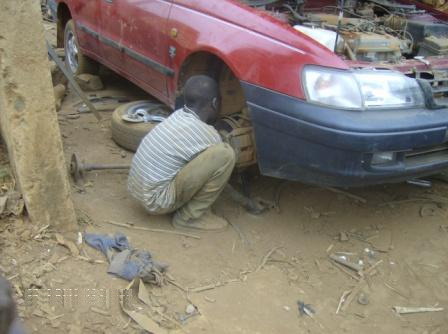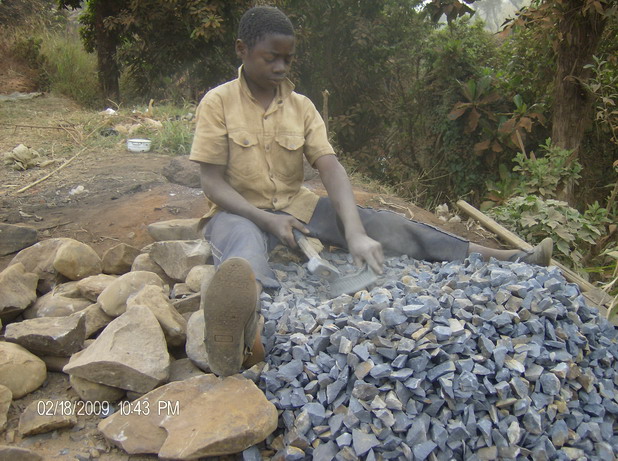Diagnosis of Child Labor and Trafficking Trends
Description
In 2008, IDF undertook a project with the support of the ILO to diagnose the trends of child trafficking and child labor in three Councils of the North West region (Kumbo, Wum and Bali).

A child labourer
Project Context
The North West appears to be a common supply zone for the recruitment of children due to the fact that domestic care is highly present in households compared to the South which is a reception zone. Thus the TC-RAM project has targeted the North West as an intervention zone due to its dynamics in auto development which is part of the traditional habits and mostly because it is directly or indirectly marked by the persistence of certain forms of vulnerability such as child trade, marginalization of indigenous people and tribes, HIV/AIDS, inequalities and problems of gender. The project targeted 3 councils of the North West; Wum, Kumbo, Bali and encompassed three themes: the fight against child labor; local economic development; and the development of Mbororo communities.

A Child Mechanic
Activities
IDF carried out action research to better understand the phenomenon of child labor and trafficking in the target areas. Through interviews, observations and data collection, IDF was able to develop a comprehensive report as well as a profile of the most vulnerable child.
Results and Impacts
The study showed that it is difficult to differentiate between child labor and children working to help their families. There are traditional expectations within the Cameroonian culture which place a high value on grooming children for their future, which entails working and even perhaps being placed in servitude positions. Although official statistics are difficult to obtain, in the study zone the number of children exposed to child labor and trafficking was estimated to be 30,000. Due to the cultural and legal discrepancies, in order to address the issue further examination and capacity building with relevant stakeholders such state technical services, local authorities/councils, traditional authorities, NGOs/Associations, community leaders, parents and children be carried out.

Child stone breaker
Difficulties Faced
- Ignorance at all level is one of the main cause of Child Trafficking (CT) and Child Labor (CL) in the project zone.
- No functional mechanism exist to fight CT
Lessons Learned
- A better understanding of the project zone is needed related to supply issues, transit routes and user zones
- Perception of CT/CL in the project zone contradict the perception of the international community
- CT chain exist in all the councils, facilitate by intermediaries ; most of the parents and guardians are intermediaries
- Poverty and economic situation of parents are major causes of CT/CL
Way Forward/Recommendations
- Council development plan need to integrate activities preventing CT
- More awareness campaigns and training should be carried out in especially vulnerable areas
- Advocacy for better enforcement of laws and preventative actions for CT/CL is necessary
Download Report and Summaries:
- To access a copy of the full report click here: Diagnosis on the Phenomenon of Child Trafficking in NWR Cameroon 2009 Final Report
- For a summary of the report click here: Diagnosis on the Phenomenon of Child Trafficking in NWR Cameroon 2009 Summary Report